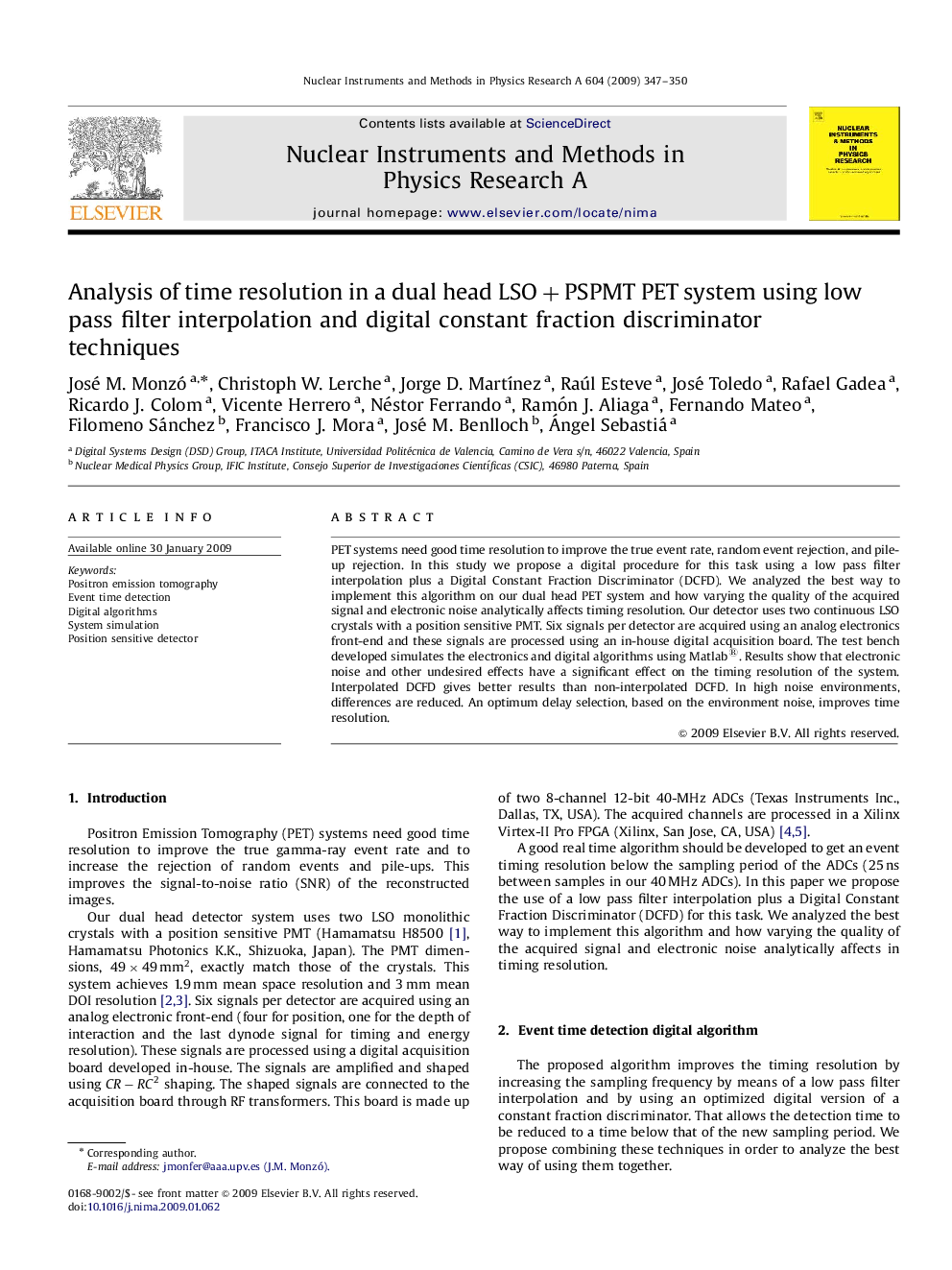| Article ID | Journal | Published Year | Pages | File Type |
|---|---|---|---|---|
| 1827889 | Nuclear Instruments and Methods in Physics Research Section A: Accelerators, Spectrometers, Detectors and Associated Equipment | 2009 | 4 Pages |
PET systems need good time resolution to improve the true event rate, random event rejection, and pile-up rejection. In this study we propose a digital procedure for this task using a low pass filter interpolation plus a Digital Constant Fraction Discriminator (DCFD). We analyzed the best way to implement this algorithm on our dual head PET system and how varying the quality of the acquired signal and electronic noise analytically affects timing resolution. Our detector uses two continuous LSO crystals with a position sensitive PMT. Six signals per detector are acquired using an analog electronics front-end and these signals are processed using an in-house digital acquisition board. The test bench developed simulates the electronics and digital algorithms using Matlab®Matlab®. Results show that electronic noise and other undesired effects have a significant effect on the timing resolution of the system. Interpolated DCFD gives better results than non-interpolated DCFD. In high noise environments, differences are reduced. An optimum delay selection, based on the environment noise, improves time resolution.
